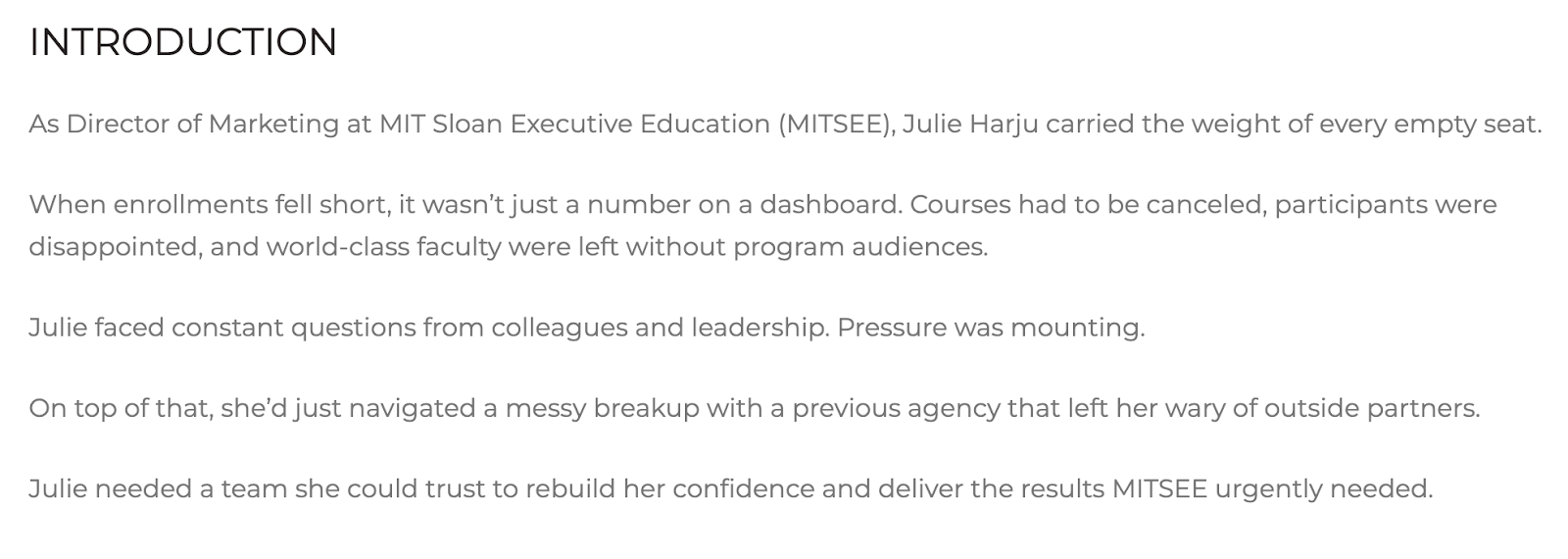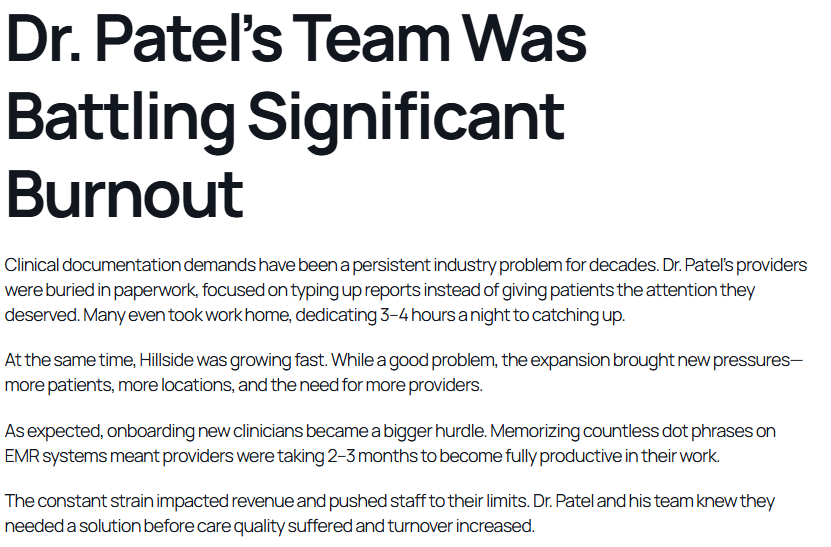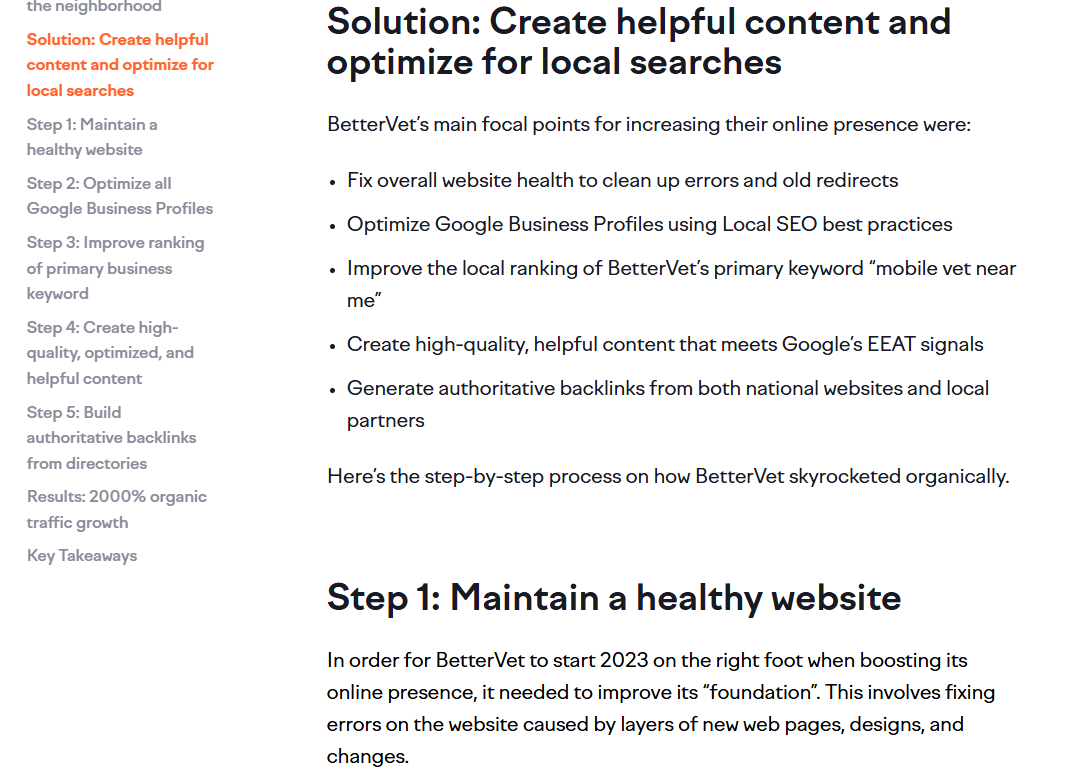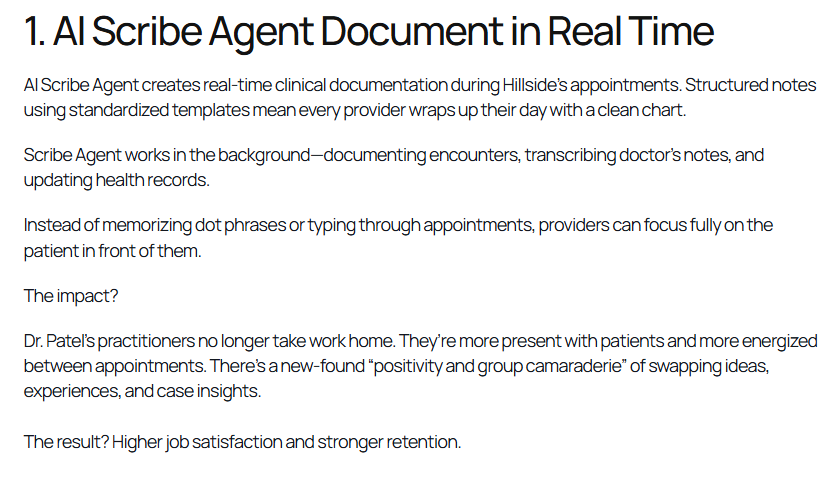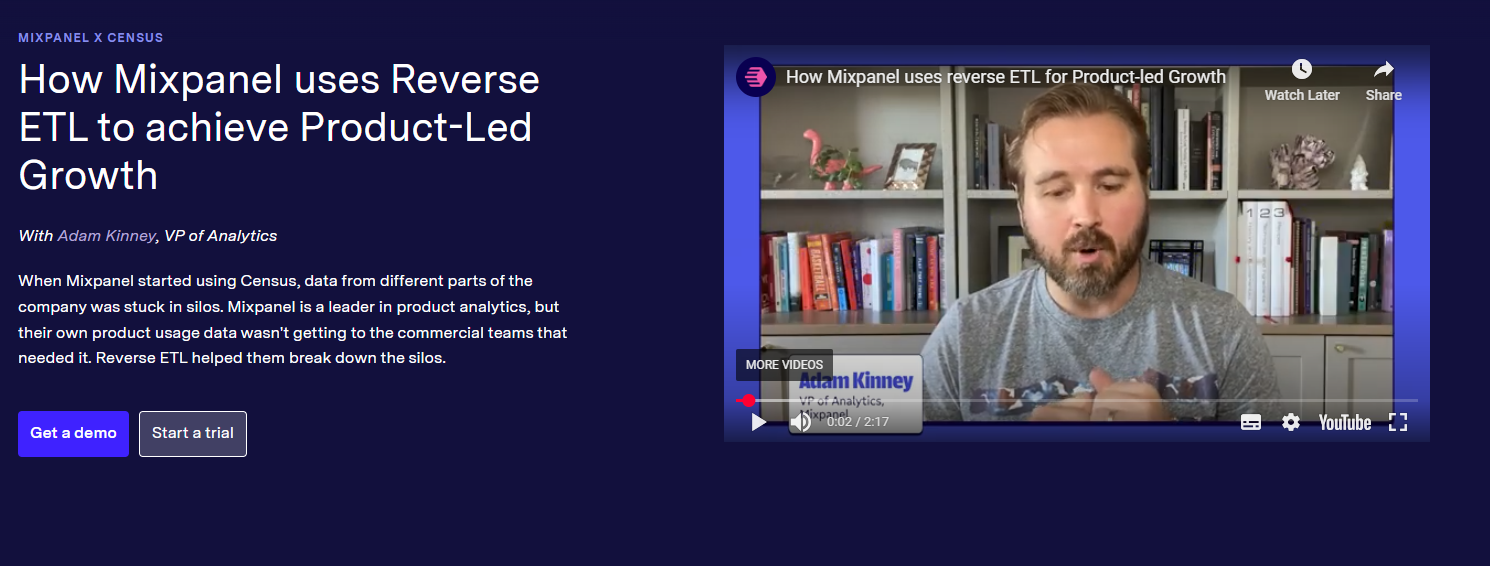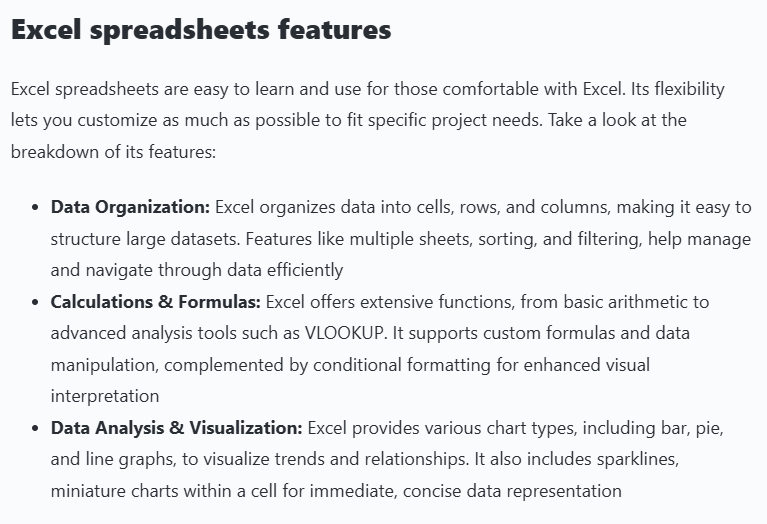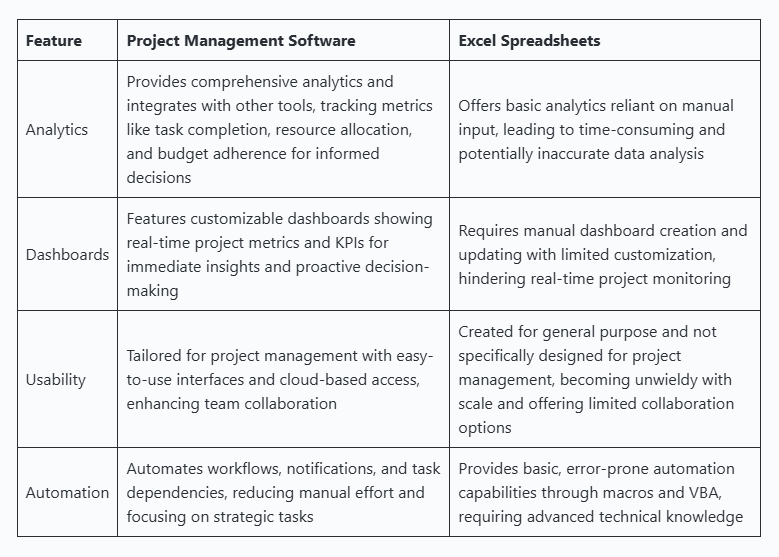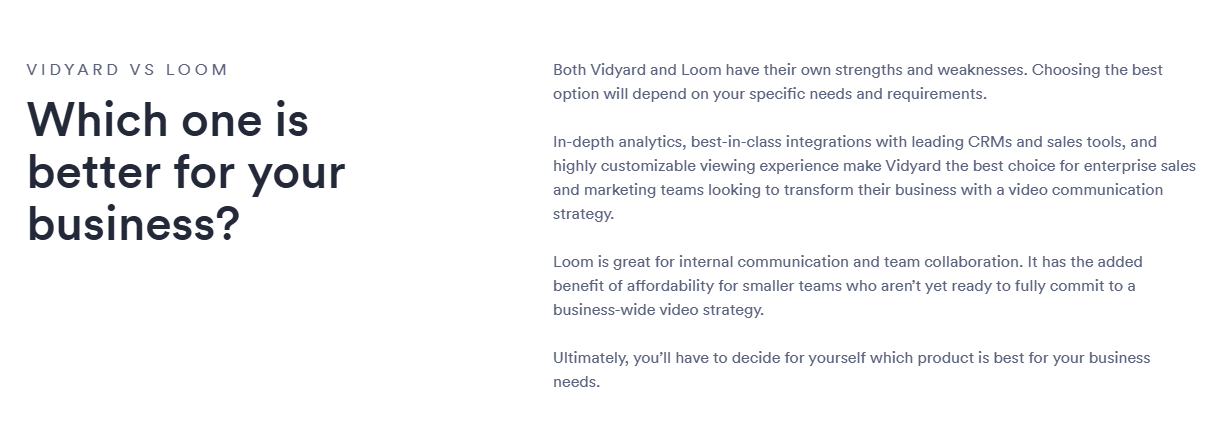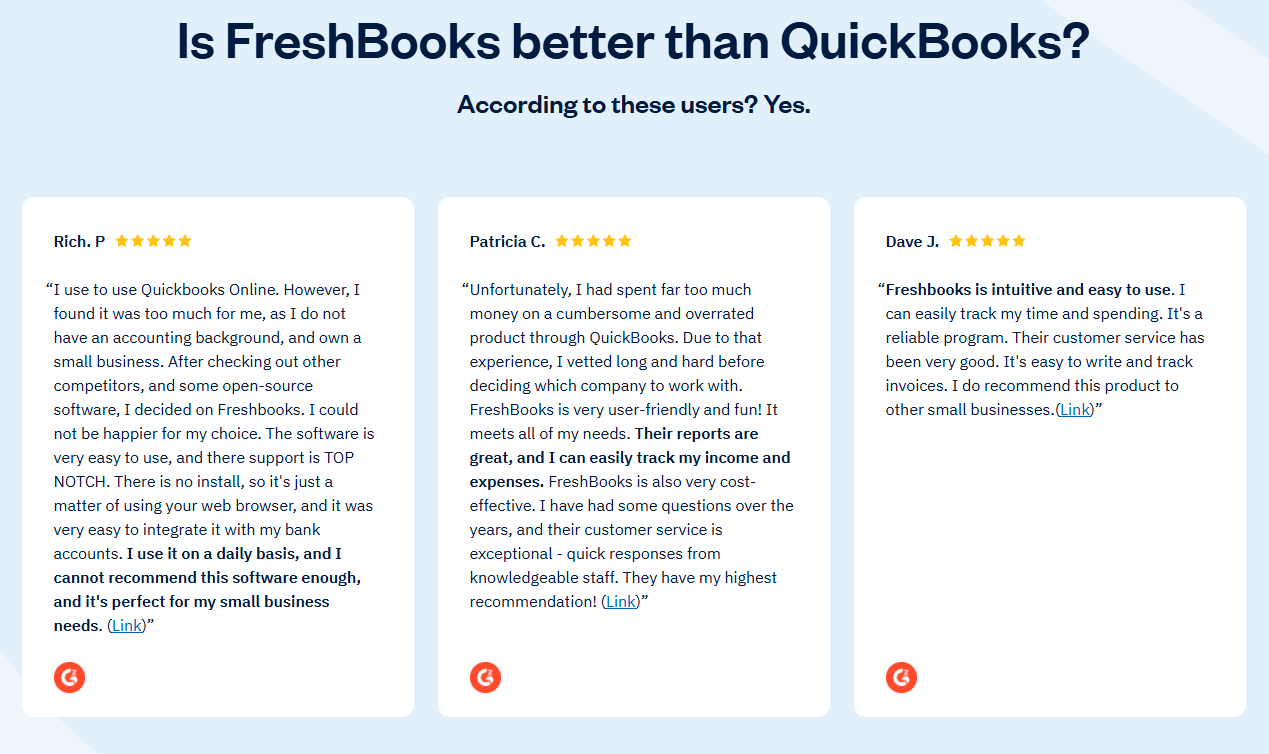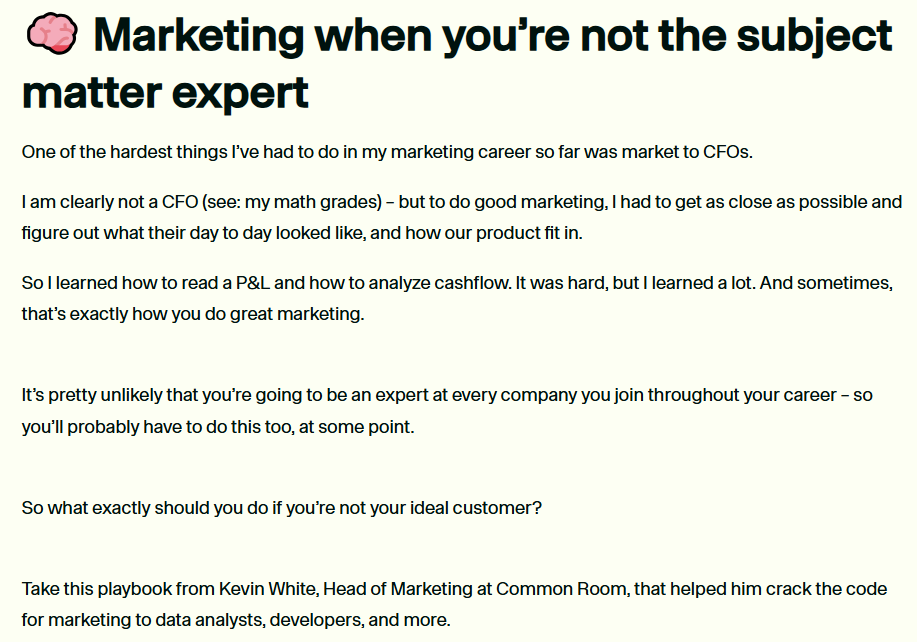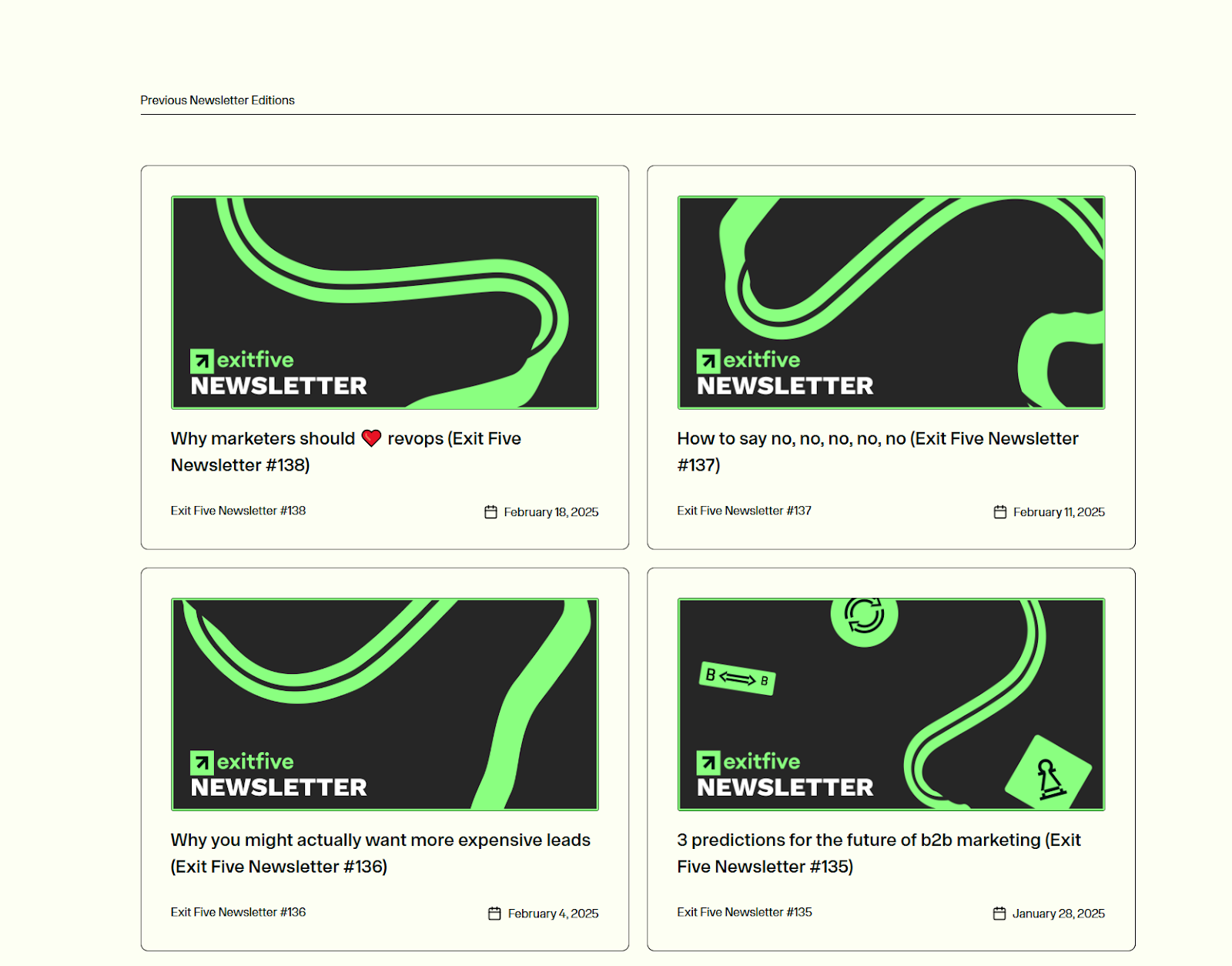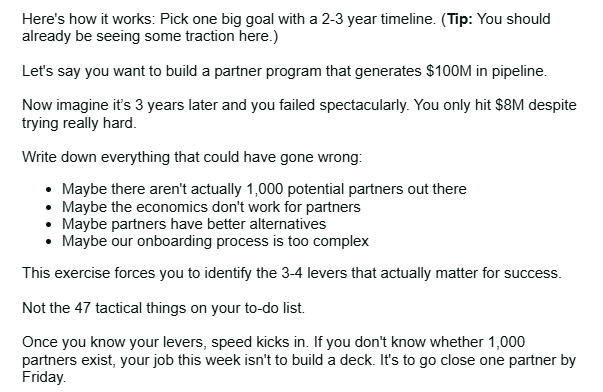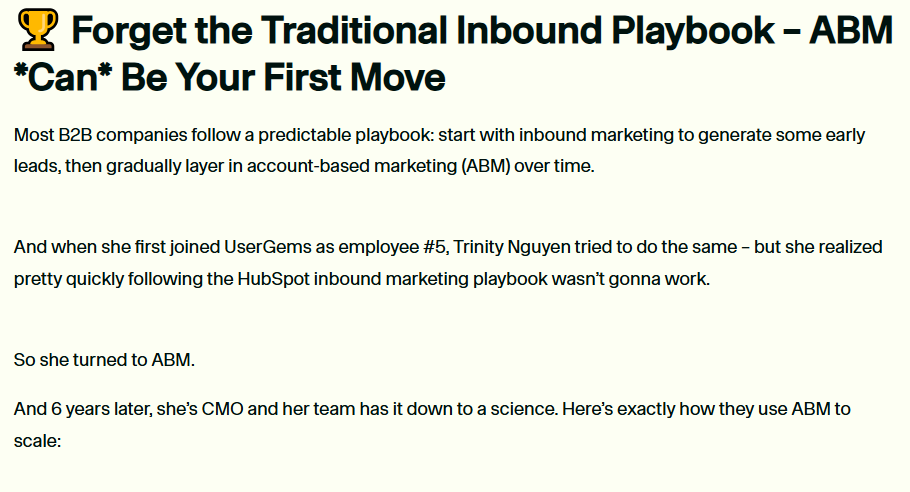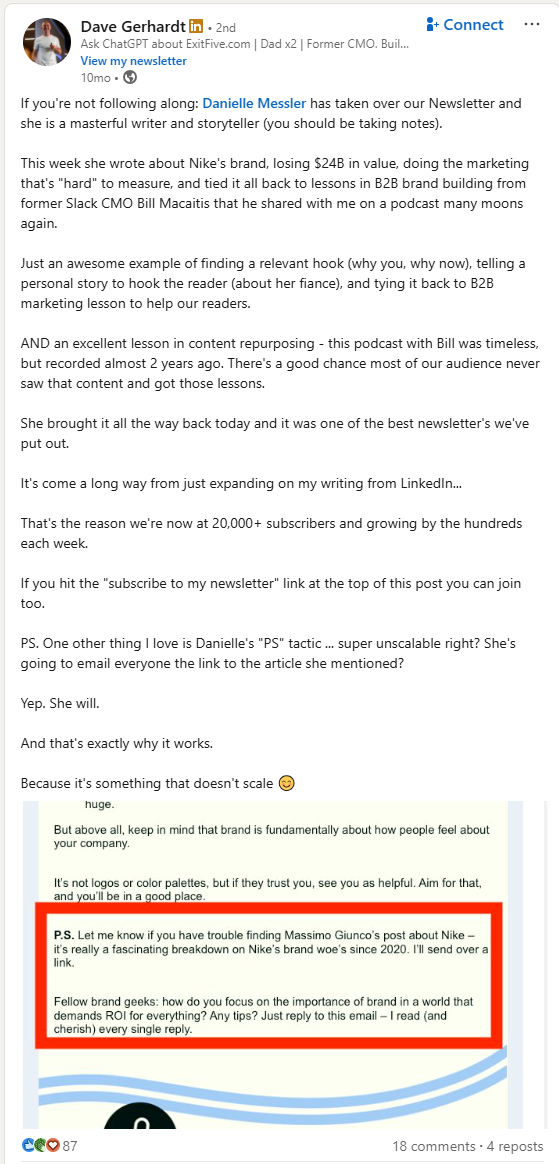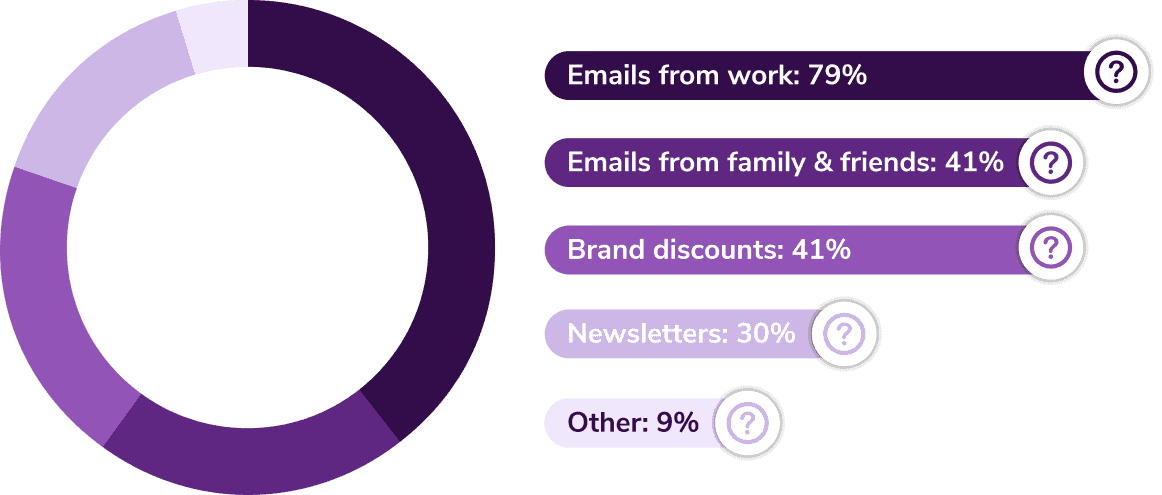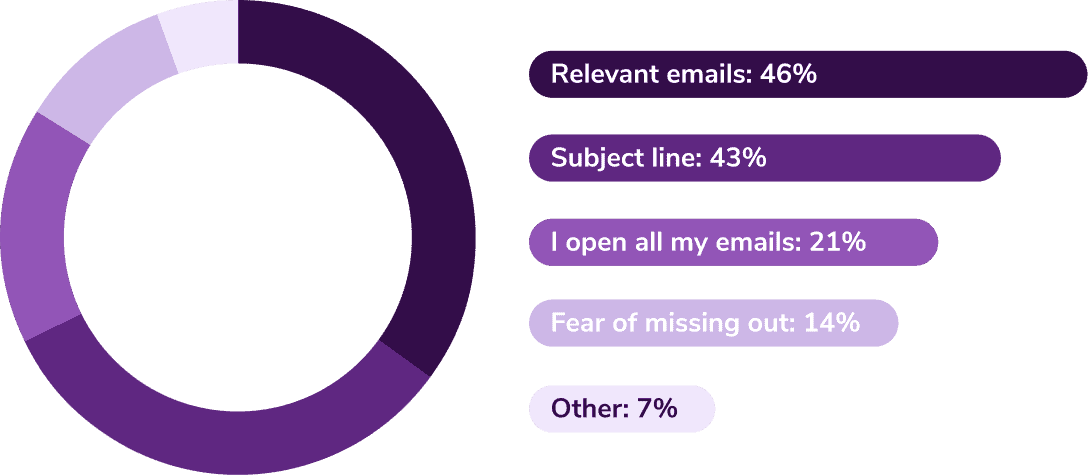If you want to start meaningful conversations, build trust, earn a spot in the consideration set, and convert leads, you must invest in high-quality content.
Why low-value content creates terrible experiences
Low-effort content translates as low-quality content. It’s generic, teaches nothing new, and barely skims the surface when it comes to actionable advice that helps readers solve problems.
This incentivizes buyers to seek complete answers elsewhere and actively ignore your content in the future.
As such, content that doesn’t solve problems and looks like everything else is a race to the bottom.
It’s true that if you get on-page SEO right and answer search queries just enough to masquerade as depth, it might rank. But articles optimized for search alone destroy credibility because the moment buyers dig in, they’ll notice they’re thin as a rake.
Thin advice creates terrible experiences because:
- It leaves out the “why”: Sharing “why” gives readers key contextual information that helps them understand the value they’ll get from your content. It’s intriguing, relatable, and pokes at shared pain points which fuel the audience’s desire to find out if it provides solutions.
- It doesn’t explain “how”: If readers don’t know how to fix the problems you poked at, or achieve jobs to be done (JTBD), they’re left with more questions than answers. If the “why” verifies there’s work to be done, the “how” practically bridges the knowledge gap. Including one without the other is the fastest way to harm brand equity and lose trust.
- It skips examples: Examples bring the “how” and “why” to life. They allow readers to picture themselves taking action based on the insights they’ve learned from specific use cases. If a marketing initiative generated impressive revenue figures by following a specific playbook, for example, the reader can apply those insights to their unique situation and pick and choose which gems to implement. Bad content leaves readers without clear paths forward.
- It doesn’t inject unique insights: Unique insights help you build credibility and stand out from the crowd. It’s where you share your point of view and lived experiences, add something new to the conversation, take a contrarian stance, or showcase results. Without it, you’re missing the most significant factor of all: differentiation.
To differentiate and create memorable content that keeps your business top of mind (and adds you to the consideration set), you must go beyond the basics.
A reliable way to differentiate yourself is by injecting creativity into your content. Learn how to build trust and a competitive moat in our article on using creativity in content marketing.
A “velocity-first” strategy that prioritizes publishing speed and traffic over quality content can do more harm than good.
If you generate tons of traffic through organic search and deliver a terrible experience, users will bounce, look elsewhere, and remember your brand for all the wrong reasons.
It also does you no favors in building brand awareness and establishing credibility with decision-makers.
Grizzle’s founder & CEO, Tom Whatley doesn’t mince words on the subject:
The power of quality content (and why you shouldn’t settle for less)
Instead of playing to a crowd that leaves after the first few songs, put a show together where the audience craves an encore.
Like a phenomenal concert, quality content engages from start to finish and empowers your audience to convert and become loyal fans.
Based on experience and first-party results, we know this to be true. But powerful third-party data from an industry titan is empirically persuasive.
According to Semrush’s State of Content Marketing 2022 Global Report, 55% of respondents said improving the quality of their content was the top tactic that contributed to their overall success last year. 61% noted that “making content more authentic” helped their content rank organically. And, 40% plan to invest their budget in building better quality written content.
The hard work you put into a content strategy that prioritizes quality is worth its weight in gold because it acts to future-proof your content. When it’s time to fire up your production line, your work today can pay dividends for years to come.
That’s because quality evergreen content can be continually repurposed and redistributed. And SEO-driven content can be optimized and improved upon consistently to show your audience and Google that it’s still relevant.
For example, Ahrefs grew to an eight-figure ARR company and achieved 65% growth year-over-year by prioritizing quality over quantity. One of their primary tactics is updating their best-performing SEO-driven articles and re-distributing them.
They don’t publish low-effort search articles, celebrate the fact that they rank, and then rewrite those articles down the line. That strategy would provide a terrible user experience (for reasons we’ve described) and waste your time and money.
The only way to build a future-proofed content marketing program is to start slow and lay a strong foundation.
Practically, this involves:
- Defining your editorial standards: These are the rules you’ll follow to build and uphold your reputation and effectively serve your audience. They define who you are, how you’ll represent yourself, and how to communicate effectively. The editorial standards and guidelines must be reflected in the final product whenever you create content. Otherwise, you’re left hoping it’s relevant, credible, polished, and correctly formatted, which isn’t strategic.
- Building a strong content operation that leverages great writers: Crafting quality content requires an expert’s touch. You need a team that understands how to dig beneath the surface with in-depth research, ask leading questions that extract useful and relevant information from SMEs, structure a narrative that’s logical, cohesive, engaging and easy to digest and polish it to the point of perfection. Beyond that, your content operation must follow core project management principles so that your editorial calendar, content production workflows, and SEO audits run smoothly.
Once this foundation is in place, you can ramp up your production and publishing frequency.
For example, we’ve spent years working with a SaaS brand that we now produce 15 to 20 articles a month for. We can maintain quality at this scale because of the editorial standards and operational workflows we took time to establish at the beginning of our engagement, and the results speak for themselves:

As Tim Soulo, CMO of Ahrefs says, you can grow traffic by publishing often, but if you want to grow traffic that converts, prioritize quality.
We recommend starting with a publishing cadence of one article per week, then ramping up. But before you drive the car, you need to assemble an engine that will last.
We’ve explained why editorial standards and a strong content operation are critical. Here’s explicitly how to build those functions.
Establish editorial standards that help you deliver unmatched value
Similar to how you write mission, vision, and values statements when building a business, editorial standards serve as the foundation for your content creation process.
Without them, you and your team have no way of knowing if what you create represents your brand and communicates your position effectively and deliberately.
Start by defining what quality content looks like to you and how you’ll create it. Make sure that everybody that will touch your content has access to this guidance, and update it as needed.
This way, you’ll have a resource that team members and stakeholders can refer back to, and a process by which to hold everybody accountable to detailed standards.
To stay organized, break your editorial standards into three categories: goals, values, and integrity.
1. Editorial goals
These outline the reasons behind why you’re creating content and who you’re creating it for.
For example, if a content marketing goal is to increase user acquisition, an editorial goal could be to create content that:
- Educates potential buyers on why your product or service is the right choice
- Helps buyers make purchase decisions
If you have more than one content marketing goal, ensure each one gets an editorial goal counterpart.
This way, every single piece of content you create will be tied to your overall content strategy, positioned to serve your audience, and set up to help you reach your end goals.
2. Editorial values
Editorial values describe how you’ll provide meaningful experiences to readers. If you want to reach your editorial goals, you have to build credibility and trust with buyers—and valuable experiences are the best way to do that.
Continuing with our example of wanting to increase user acquisition via educational content, to deliver editorial value, it’s key to define how you’ll differentiate from the competition.
One way to do this could be to share actionable insights supported by owned data and personal experiences. You could also share opinions on industry trends (i.e. whether or not you agree with them and why). This will help you to:
- Create unique content that’s incredibly comprehensive and compelling
- Build credibility, become an industry-leading brand, and gain the trust of buyers
Along the same vein, decide which content formats will work best to help you reach your goals.
For example, educational content that teaches readers how to do something, or presents a new strategic way of thinking, often works best with “How to” formats. Whereas opinionated positions that allow you to take a stance on industry trends work best as the “thought leadership” content.
Defining these details before you begin creating content helps you present each topic in the most digestible and impactful way possible.
3. Editorial integrity
Editorial integrity ensures that the content you create upholds your brand reputation and reflects your preferences (e.g. your tone of voice and writing style).
The best way to maintain editorial integrity is by building and maintaining detailed content guidelines.
These help you get clear on preferences for formatting, typography, punctuation, tone of voice, how to cite, attribute, and present stats, facts, and sources, what competitors to avoid including in your content, what partners to mention, internal and external linking best practices, and what CTAs to add throughout.
Here’s what the “Key information to keep top of mind” section of our own content guidelines looks like:
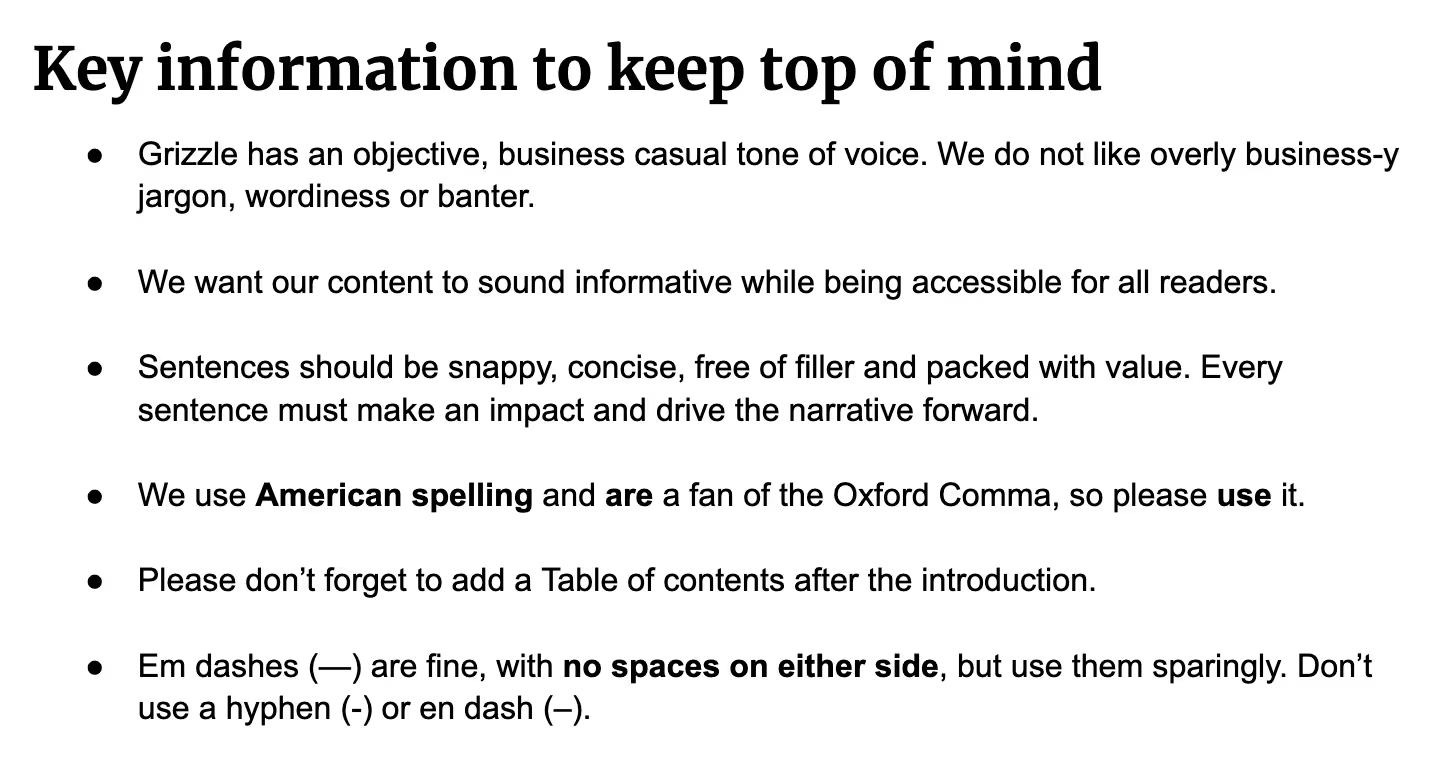
Besides content guidelines, you can also create a “Getting started writing with BRAND” resource that acts as an onboarding guide and gets writers and editors up to speed with your editorial standards.
Sections can include:
- What BRAND does
- BRAND’s writing style (with detailed examples)
- BRAND’s content goals
- BRAND’s products (and how to represent them in content)
- Link to BRAND’s content guidelines
This is a great way to amalgamate editorial goals, values, and integrity standards in one centralized place to stay organized.
With your editorial standards defined and mapped out, you’ve laid a strong foundation to refer back to throughout the content production process.
They’ll act as a true north for why you’re creating content in the first place, how exactly to do it effectively, and hold every person involved accountable.
Build a strong content operation that engineers quality in its sleep
Editorial standards without a strong team to execute them are akin to a stack of paper blowing in the wind. Or, a book of poetry written in a language that the reader doesn’t understand.
To ensure your standards are followed and upheld, you must enlist a team of A-players that understand the importance of quality content, how to create it, and how to run a tight quality control ship.
Here’s how we recommend hiring first-rate writers and editors, running smooth content workflows, and getting key feedback from stakeholders and SMEs so expectations are always aligned.
1. Hire writers that understand the power of quality (and how to produce it)
Strong writers first and foremost must understand the importance of valuable content.
This wasn’t always the case, unfortunately. This is why we still hear the “velocity-first” argument echoing through social media conversations.
Because quality wasn’t always a priority, sometimes less experienced writers are more valuable contributors than experienced ones. It’s easier to train somebody on how to write a strong paragraph than the principle behind why a strong paragraph matters.
Of course, newer writers can take longer to bring up to speed, and there is a large subset of experienced writers that have always prioritized quality regardless of what Google had to say about it.
We’ve reviewed thousands of applications over the years and trust us, we have seen it all.
So, how do you separate the great from the good? Run a paid pilot project.
Here’s the process we use Grizzle:
- Choose a topic that aligns with your goals: This helps you gauge whether candidates have subject matter expertise on topics that matter to your brand or are brilliant researchers that can craft compelling narratives based on detailed analysis.
- Create a test brief: Share information about your target audience, write an angle that explains how you want this piece of content to stand out, and build a detailed outline. This helps you see how well they follow instructions and evaluates critical thinking skills.
- Split the project into two milestones: Milestone one tests ~250 words and gives you a taste of their writing style and ability to introduce a topic, make an argument for why it’s important, supplement it with an example, and add a takeaway (all key elements of quality content). Milestone two is ~750 words and tests their topical knowledge in more depth, ability to answer questions/intent fully, how well they analyze and present results, and creative chops.
- Gauge how they fold in feedback: Feedback is a key part of the production process. The best candidates take in your feedback and turn around excellent edits that hit the nail on the head. As long as the feedback you provide explains what changes you want, and why, they should turn around spot-on edits without much effort.
You’ll still need to onboard and train new writers so they’re aligned on your content strategy, editorial standards, and expectations, which is where a “Getting started writing with BRAND'' document really shines.
2. Run a smooth production line and prioritize continuous feedback
If you’re disorganized, creating content can be a hectic process. There’s always something to create, review, give feedback on, publish, promote, audit, and optimize.
Disorganization will negatively impact quality and waste valuable time and resources.
As a bare-bones basic, you need an editorial calendar. It’ll help you commit to publishing content on a set cadence, and you can work backward from the “live” date to schedule production stage milestones.
But that’s not enough. To stay organized and on top of quality control, you must create and follow dedicated workflows and project management processes to ensure nothing slips through the cracks or is rushed.
First, establish your content production stages. Then, build processes and SOPs for each one. These may vary depending on your process and needs, but generally, a content production line is made up of these stages:
- Brief
- Outline
- Draft
- Editorial
- Repurposing
- Publication
- Promotion
- Optimization
Each stage must be accompanied by a custom workflow and should follow a waterfall project management methodology (i.e. a prescriptive set of steps that’s actioned before moving to the next stage).
For example, after you create a brief, share it with SMEs and stakeholders to get their feedback within X time frame (two days is a good turnaround time). Then, action their feedback the following day and ship it back for a final look and sign-off before creating the outline.
Repeat this “do” and “review” process throughout each stage so that key stakeholders can contribute thoughts, ideas, and feedback before you expend effort that may go to waste. When you continuously align expectations, you save time and resources.
Of course, before you ship the first draft over, your editorial team should run a developmental and copy edit, accompanied by a proofread, to ensure it’s aligned with the brief and outline and is in a presentable state.
I break down the difference between the three editing types and how they fit together in this thread:
To ensure people complete the tasks in your workflows by assigned deadlines, enlist the help of a project management tool like ClickUp, Airtable, or Asana.
3. Spend time finding great editors (aka your ace in the hole)
Speaking of editorial, great writers should compose an excellent draft and run a self-edit, but great editors are the glue that bring it all together.
They have an out-of-this-world-like ability to see through content like the matrix and spot exactly what needs to be done to up the quality level.
They also deeply understand how people read content online. The Nielsen Norman Group published research on Eye Tracking and discovered that when people arrive on a page, they quickly run a content appraisal.
During these few seconds, they’re assessing the “nature, quality, importance, and potential value of the page’s information.”
Two critical elements they scan are headings and introductions. They want to understand if the content aligns with their query, if it appears credible, and if it will be useful to read.
Misaligned headings and fluffy introductions are credibility killers. Great editors know this and ensure each element hooks, compels, and ties benefits to outcomes.
Introductions full of generalizations and aspirational filler are boring and don’t give buyers a reason to learn more. Introductions that poke at pain points, make a compelling argument and clarify what the reader will learn if they keep reading pique curiosity and are difficult to click away from.
Regarding integrity, editors also fact-check every internal and external source to ensure it’s correct, original, and accurately interpreted. This isn’t always easy to do, but sharing an article with 100% accurate and credible information goes a long way in building trust, so it’s worth the effort.
Prioritize quality, or lose the long game
You have two choices: prioritize quality or play the dopamine game.
The dopamine game costs less and might generate quick traffic but provides a terrible user experience, kills credibility, and barely converts.
The quality play is a long game. It requires upfront effort, and you won’t see results immediately (unless you have a sophisticated distribution strategy, a diversified content portfolio, and align content calendars with other goals beyond search).
It requires a bigger investment, but provides an excellent user experience, helps you achieve your goals, and has a bigger ROI in the long run.
Of course, there’s a bonus option three, and that’s where people like us come in. Nobody said that you have to produce quality content alone.
Leveraging experts with proven systems and processes that get results allows you to have your cake and eat it too.



